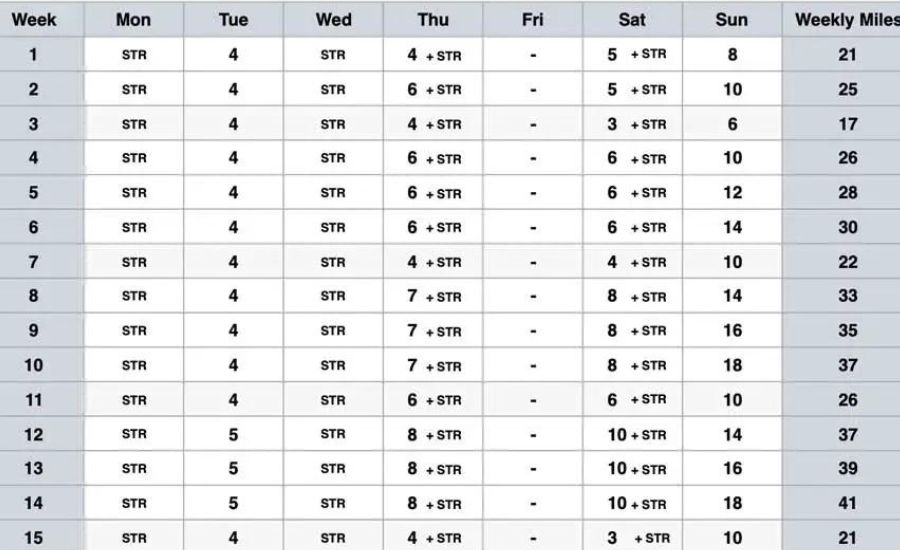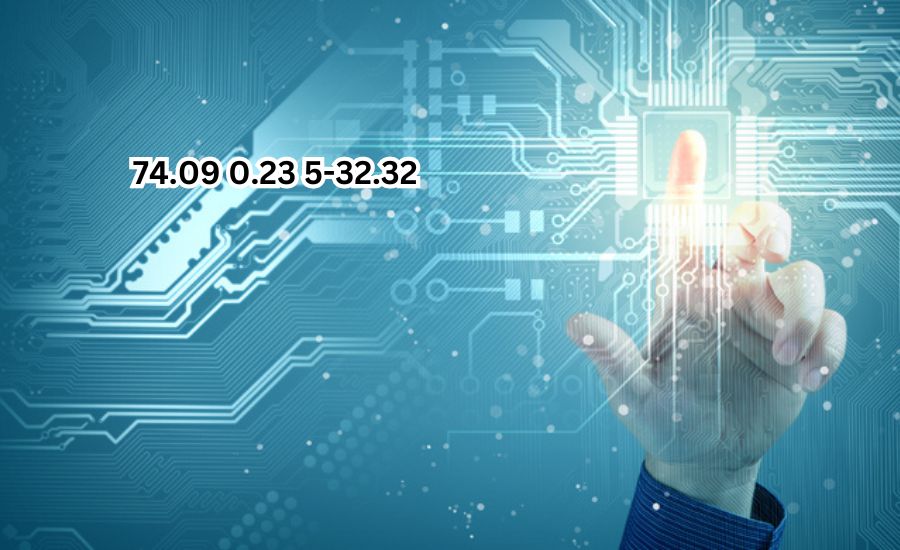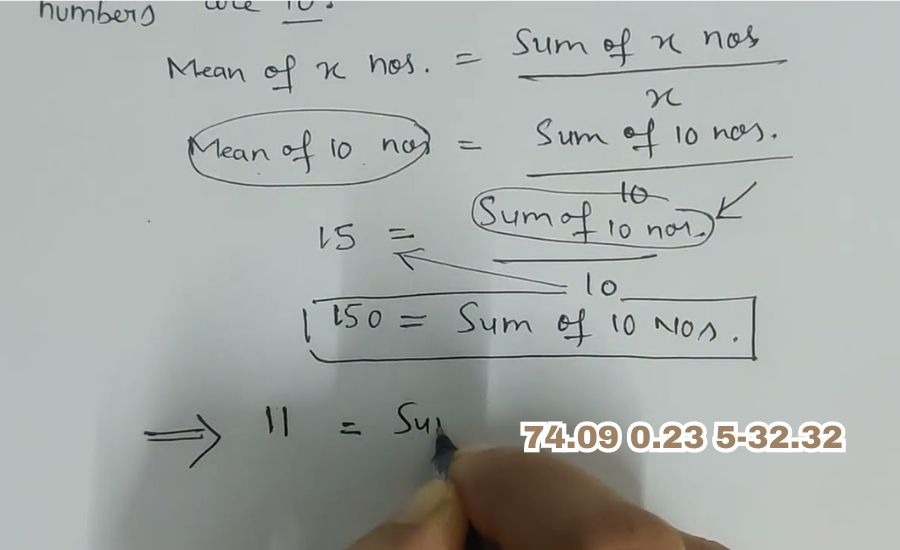Have you ever wondered what “74.09 0.23 5-32.32” means? Well, you’re not alone! This sequence might look confusing, but it can be pretty simple when we break it down. Whether it’s numbers in math, science, or daily life, “74.09 0.23 5-32.32” could tell us many things depending on where it’s used.
Let’s explore these numbers step by step. From money and measurements to fun facts, “74.09 0.23 5-32.32” could help us understand how numbers work differently. Ready to learn more? Keep reading!
What Does “74.09 0.23 5-32.32” Really Mean?
When you see the numbers “74.09 0.23 5-32.32,” they might initially seem random. However, they can hold specific meanings depending on the context. For example, 74.09 might represent a percentage or a value. At the same time, 0.23 could be a small fraction or a decimal point in a data set.
These numbers could also indicate a range, with 5-32.32 showing the minimum and maximum values in some cases. Understanding where and how this set of numbers is used helps us see its true purpose. Every field, from finance to engineering, can use these numbers differently.
Breaking Down 74.09 0.23 5-32.32: Simple Guide for Beginners

Let’s take it step by step. First, 74.09 could be a statistic or measurement—maybe even a percentage. Second, 0.23 is often seen as a small amount, like a fractional change or a detail in a report. Lastly, 5-32.32 can show us a range of numbers, such as in a chart or a table.
In math, numbers like “74.09 0.23 5-32.32” clarify things. Learning to break them down in school or at work is essential to better understand how these numbers function and what they might tell us.
How 74.09 0.23 5-32.32 Is Used in Everyday Life
Daily, you might come across numbers like “74.09 0.23 5-32.32.” For instance, 74.09 could represent the percentage of something, such as a discount. Meanwhile, 0.23 could be a minor measurement, like weight or distance in sports or fitness tracking.
The range of 5-32.32 can show us various possibilities, such as temperature ranges or store prices. Understanding these numbers can help us make sense of information we encounter in everyday situations. Next time you see a sequence like this, you’ll know it’s more than just numbers.
Exploring the Meaning of 74.09 0.23 5-32.32 in Math
Math uses many numbers to explain things, and “74.09 0.23 5-32.32” can be used in math lessons. For example, 74.09 might be a percentage, which tells us how much of something exists out of 100. This is a valuable way to measure things like success rates or scores.
The number 0.23 can be part of a decimal system in math, where we measure small amounts like centimeters or kilograms. The range 5-32.32 could explain things like the possible answers on a math test or the distance between two objects. Math helps make sense of such number sequences!
Why 74.09 0.23 5-32.32 Could Be Important in Science

In science, numbers are essential in explaining results, and “74.09 0.23 5-32.32” could represent different measurements or outcomes. For instance, 74.09 might be a temperature reading during an experiment, while 0.23 could signify the margin of error in a result.
The range 5-32.32 could be a scientific measurement showing the limits of an experiment, like how far a chemical reaction goes or how much energy is produced. Understanding numbers like these helps scientists keep their experiments accurate and understandable.
Do You Know: Naruto city animated wallpaper
74.09 0.23 5-32.32: A Fun Look at Numbers!
Sometimes, numbers seem tedious, but “74.09 0.23 5-32.32” can be fun when we break it down. Imagine 74.09 as a score in a game—you did great! Now, picture 0.23 as a tiny amount of something, like a small piece of cake.
The numbers 5-32.32 could even show you the number of players in a game or the size of a toy collection. Thinking of numbers in fun ways helps us remember them and enjoy learning more about them.
How to Understand 74.09 0.23 5-32.32 in Easy Steps
Let’s make it easy to understand “74.09 0.23 5-32.32.” Start by looking at the first number: 74.09. This is likely a percentage or a statistic. Next, 0.23 is much smaller and might represent a fraction of something. It could be part of a more significant number.
Finally, look at 5-32.32 as a range. This could be a range of values, such as scores or sizes. Taking each number separately makes it easier to see how they all fit together and what they mean.
The Secret Behind 74.09 0.23 5-32.32 in Measurements

Measurements are all about accuracy, and “74.09 0.23 5-32.32” can help explain that. For instance, 74.09 might be the size of an object or the weight of something in grams. Meanwhile, 0.23 could show a tiny difference, like when weighing ingredients in a recipe.
The range of 5-32.32 indicates the possible size of an object or a range of measurements in a project. These numbers are crucial to understanding cooking, building, or drawing measurements.
74.09 0.23 5-32.32 in Finance: What Do These Numbers Mean?
When discussing money, “74.09 0.23 5-32.32” might represent financial figures. For example, 74.09 could be a price or a percentage change in stocks. You might see it on a financial report showing how a company is doing.
The number 0.23 could show a slight change in value, such as interest on a loan. The range of 5-32.32 represents the price range of a product or investment. Knowing how to read numbers like these is essential for making wise financial decisions.
How Engineers Use 74.09 0.23 5-32.32 in Their Work
Measurement Precision: Engineers often use exact measurements like “74.09” and “0.23” to ensure accuracy in their designs and constructions.
Material Specifications: The value “74.09” might indicate a specific material property, such as strength or thickness, which is crucial for safe engineering.
Tolerance Levels: The “0.23” value could represent a measurement’s acceptable deviation or tolerance, allowing engineers to maintain project quality.
Range of Dimensions: The range “5-32.32” might describe the minimum and maximum sizes of components, helping engineers decide what fits best in a design.
Project Cost Estimation: Engineers can use these numbers to calculate the costs of using materials or building structures based on specific measurements.
Performance Metrics: The numbers can indicate performance metrics for machinery or systems, showing what values engineers should aim for.
Design Iterations: Engineers can use such precise data to tweak designs during the engineering process to improve functionality.
Testing Standards: The numbers might represent values used in testing protocols, ensuring that products meet industry standards.
Data Analysis: Engineers can analyze data with these values to make informed decisions in design and implementation.
Collaboration: Using standard numerical references like “74.09 0.23 5-32.32” allows engineers to communicate clearly about specifications with their teams and clients.
Could 74.09 0.23 5-32.32 Be a Map Coordinate?

Maps use numbers to show locations; “74.09 0.23 5-32.32” could be a set of coordinates. For example, 74.09 might represent a latitude, while 0.23 could show the longitude or another small detail on a map.
The numbers 5-32.32 could represent a range of distances between two places, helping us navigate better. If these numbers were on a map, they might help you find a specific point or area.
How 74.09 0.23 5-32.32 Is Important in Data
In data analysis, numbers like “74.09 0.23 5-32.32” are standard. The first number, 74.09, could be a key data point, such as the percentage of survey participants. The number 0.23 might show a more petite data figure, like a fraction of the total.
A range like 5-32.32 could show the minimum and maximum results from a dataset, helping people understand trends or patterns. When working with data, it is important to learn how to read and understand numbers.
Why 74.09 0.23 5-32.32 Might Be the Key to Solving Puzzles
Numbers are often used in puzzles, and “74.09 0.23 5-32.32” could be part of a code or solution. 74.09 might be a hint to solve a math puzzle, while 0.23 could be another clue hidden in a problem.
The range 5-32.32 could show you the possible answers or steps to solve a puzzle. Numbers can make puzzles more fun and challenging, helping us think creatively.
Simple Examples to Explain 74.09 0.23 5-32.32 to Kids

Teaching kids about numbers like “74.09 0.23 5-32.32” can be easy when using simple examples. For instance, 74.09 is like 74 pieces of candy out of 100. The small number, 0.23, could be a tiny part of something, like a cookie crumb.
The range 5-32.32 could represent the number of kids playing a game or the size of toys. Kids can understand how numbers work in real life by using fun and relatable examples.
Conclusion
In conclusion, understanding “74.09 0.23 5-32.32” can be fun and helpful! We learned that these numbers can tell us important things in math, science, and everyday life. We can see how they fit into different situations by breaking them down. Whether measuring something or looking at prices, numbers are everywhere!
Remember, numbers like “74.09 0.23 5-32.32” are not just random figures; they help us make sense of the world around us. Next time you see a set of numbers, think about their meaning. You can learn to understand and enjoy working with numbers in different ways with practice!
Get More Information: Gif phd lab friday
F.A.Q.s About 74.09 0.23 5-32.32
Q: What does 74.09 mean?
A: 74.09 could represent a percentage or a specific value in a report.
Q: Why is 0.23 essential?
A: 0.23 usually shows a small measurement, like a tiny fraction or change in data.
Q: What does the range 5-32.32 tell us?
A: The range 5-32.32 shows the minimum and maximum values of something, like prices or sizes.
Q: How are these numbers used in everyday life?
A: These numbers can help us understand discounts, measurements, and sports scores.
Q: Can I see these numbers in math?
A: Yes! Numbers like these are often used in math to explain statistics and measurements.
Q: What fields use 74.09, 0.23, 5-32.32?
A: Many fields, like science, finance, and engineering, use these numbers for data and measurements.
Q: How can I learn more about numbers?
A: You can practice math problems, ask questions, and use examples to better understand numbers!
